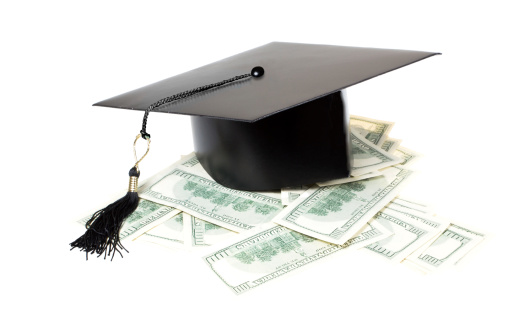It makes sense, from a supply and demand standpoint. More money in a market allows sellers to raise prices. The principal appears to apply to student loans, in many cases. The ability of a larger number of students to get student loans has an odd by-product. Schools react to the availability of more money by raising tuition.
The New York Federal Reserve was circumspect as it released its analysis of loans vs. tuition:
When students fund their education through loans, changes in student borrowing and tuition are interlinked. Higher tuition costs raise loan demand, but loan supply also affects equilibrium tuition costs—for example, by relaxing students’ funding constraints. To resolve this simultaneity problem, we exploit detailed student-level financial data and changes in federal student aid programs to identify the impact of increased student loan funding on tuition. We find that institutions more exposed to changes in the subsidized federal loan program increased their tuition disproportionately around these policy changes, with a sizable pass-through effect on tuition of about 65 percent. We also find that Pell Grant aid and the unsubsidized federal loan program have pass-through effects on tuition, although these are economically and statistically not as strong. The subsidized loan effect on tuition is most pronounced for expensive, private institutions that are somewhat, but not among the most, selective.
ALSO READ: Cities With the Widest Gap Between the Rich and Poor
An unacknowledged by-product of this trend is that as student loans go higher as they chase higher tuition, so probably does the chance of loan defaults. This presumes that higher loan amounts are harder to pay, an assumption based on economic analysis much more than tangible evidence. However, the New York Federal Reserve puts the national student debt at a total of $1.16 trillion, which approaches the amount of credit card debt nationwide.
The Washington Post recently pegged the default rate on student loans at nearly 14%. A move toward higher debt, due to some extent on higher tuitions that the higher debt allows, does it equal more defaults?
The Average American Has No Idea How Much Money You Can Make Today (Sponsor)
The last few years made people forget how much banks and CD’s can pay. Meanwhile, interest rates have spiked and many can afford to pay you much more, but most are keeping yields low and hoping you won’t notice.
But there is good news. To win qualified customers, some accounts are paying almost 10x the national average! That’s an incredible way to keep your money safe and earn more at the same time. Our top pick for high yield savings accounts includes other benefits as well. You can earn up to 3.80% with a Checking & Savings Account today Sign up and get up to $300 with direct deposit. No account fees. FDIC Insured.
Click here to see how much more you could be earning on your savings today. It takes just a few minutes to open an account to make your money work for you.
Our top pick for high yield savings accounts includes other benefits as well. You can earn up to 4.00% with a Checking & Savings Account from Sofi. Sign up and get up to $300 with direct deposit. No account fees. FDIC Insured.
Thank you for reading! Have some feedback for us?
Contact the 24/7 Wall St. editorial team.


